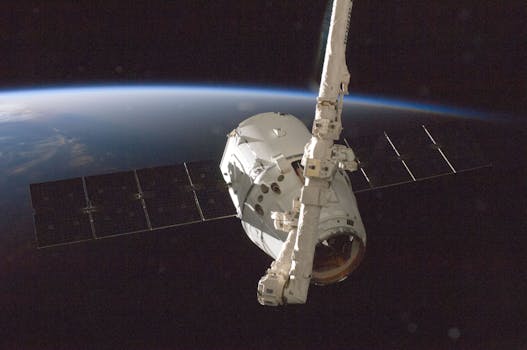
LEO Satellites Revolutionizing Global Connectivity
LEO satellites, or Low Earth Orbit satellites, are a type of satellite that orbits the Earth at an altitude of around 160 to 2,000 kilometers. These satellites have been gaining popularity in recent years due to their ability to provide fast and reliable internet connectivity to remote and underserved areas. In this article, we will explore the benefits and applications of LEO satellites and how they are revolutionizing global connectivity.
LEO satellites have several advantages over traditional geostationary satellites, which orbit the Earth at an altitude of around 36,000 kilometers. One of the main benefits of LEO satellites is their lower latency, which allows for faster data transfer rates and more reliable connections. This makes them ideal for applications such as video streaming, online gaming, and virtual reality.
How LEO Satellites Work
LEO satellites work by using a network of satellites that orbit the Earth in a constellations pattern. Each satellite communicates with a ground station, which then connects to the internet. This allows users to access the internet from anywhere in the world, as long as they have a clear line of sight to one of the satellites. The satellites use advanced technology such as phased arrays and beamforming to provide high-gain and directional antennas, which enable them to communicate with the ground stations and other satellites.
The constellations of LEO satellites are designed to provide global coverage, with some constellations consisting of thousands of satellites. This allows for redundancy and backup, in case one of the satellites fails or is taken out of service. The satellites are also designed to be easily replaceable, with new satellites being launched regularly to replace old ones and expand the network.
Applications of LEO Satellites
LEO satellites have a wide range of applications, from providing internet connectivity to remote and underserved areas, to supporting IoT devices and autonomous vehicles. They can also be used for earth observation, weather forecasting, and disaster response. In addition, LEO satellites can be used to provide connectivity for maritime and aviation industries, enabling safer and more efficient transportation.
One of the most significant applications of LEO satellites is in the field of rural broadband. Many rural areas around the world lack access to reliable and fast internet connectivity, which can hinder economic development and access to essential services. LEO satellites can provide a cost-effective and efficient solution to this problem, enabling rural communities to access the internet and connect with the rest of the world.
Challenges and Limitations
Despite the many benefits of LEO satellites, there are also several challenges and limitations to their use. One of the main challenges is the high cost of launching and maintaining a constellation of satellites. This can make it difficult for smaller companies and organizations to enter the market and provide LEO satellite services. Additionally, there are concerns about the environmental impact of launching thousands of satellites into orbit, which can contribute to space debris and pollution.
Another challenge is the regulatory environment, which can vary from country to country. There is a need for international cooperation and standardization to ensure that LEO satellites can operate safely and efficiently. Furthermore, there are concerns about the security of LEO satellites, which can be vulnerable to cyber attacks and hacking.
In conclusion, LEO satellites are revolutionizing global connectivity by providing fast and reliable internet connectivity to remote and underserved areas. They have a wide range of applications, from rural broadband to IoT and autonomous vehicles. However, there are also challenges and limitations to their use, including high costs, environmental concerns, and regulatory issues. As the technology continues to evolve and improve, we can expect to see even more innovative applications of LEO satellites in the future.



